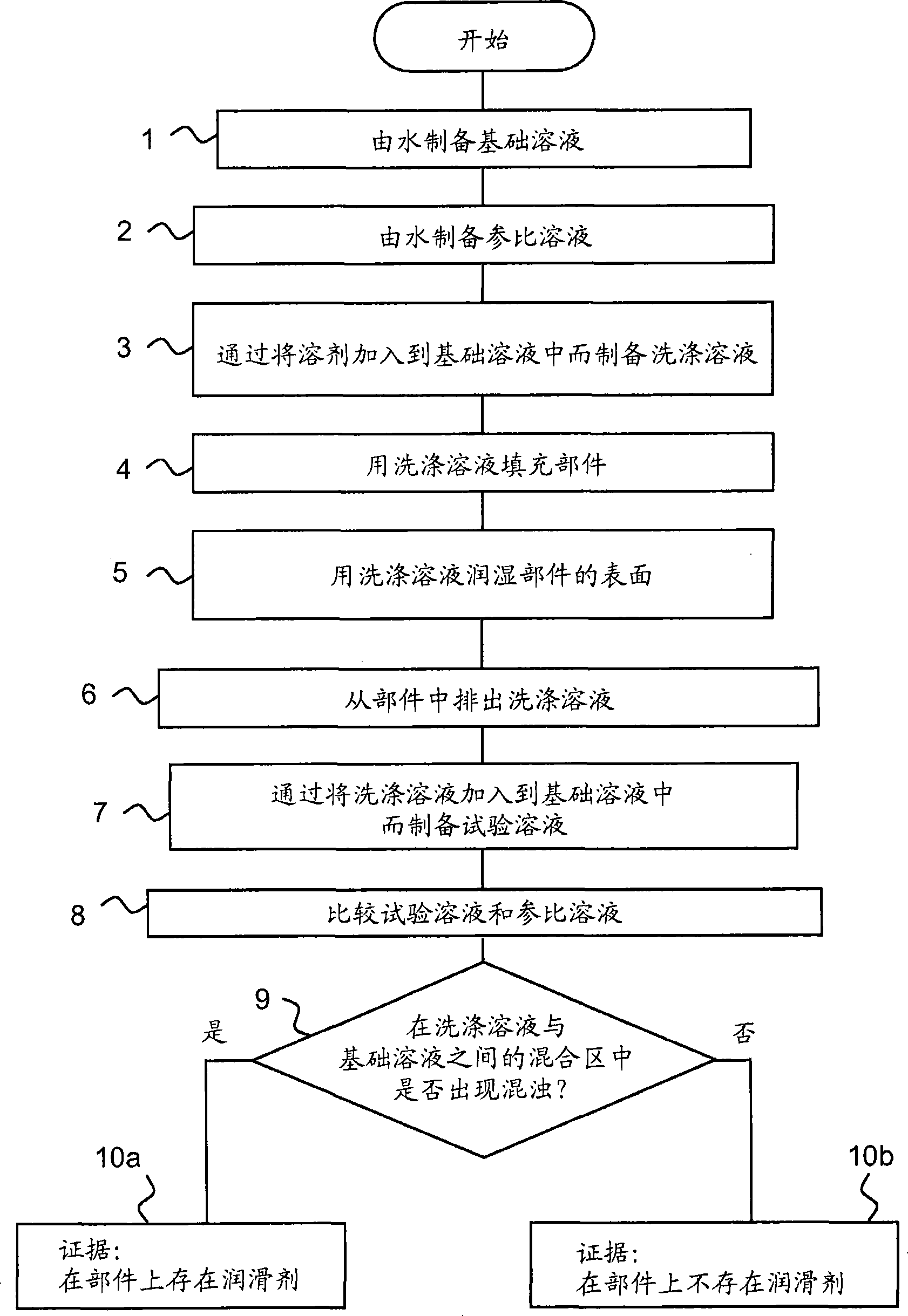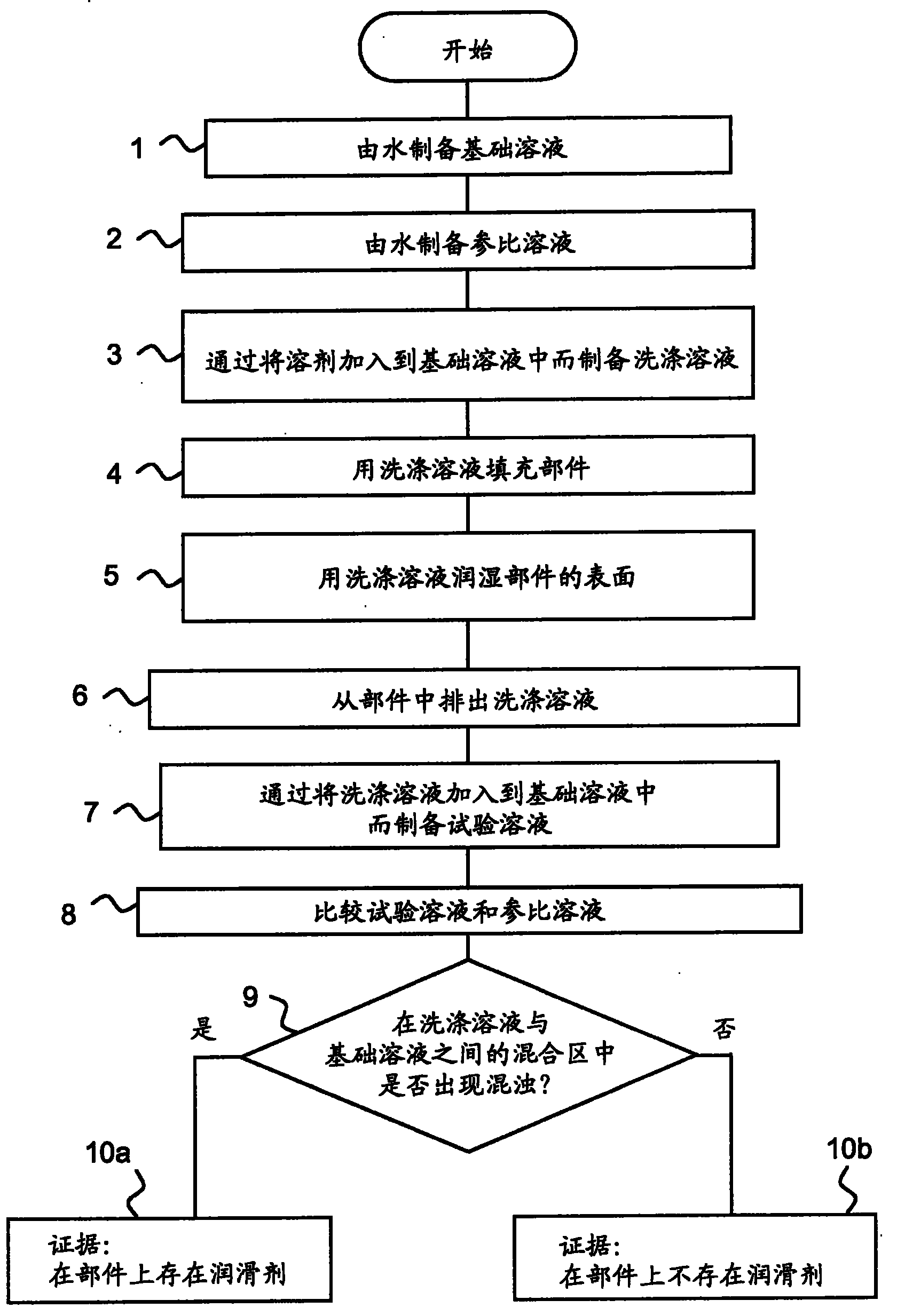Method for detecting residues on a component
A technology for detecting components and residues, applied in the direction of optical testing for defects/defects, etc., can solve problems such as high equipment costs, and achieve the effect of simplifying detection
- Summary
- Abstract
- Description
- Claims
- Application Information
AI Technical Summary
Problems solved by technology
Method used
Image
Examples
Embodiment Construction
[0035] In the method according to the invention, the procedure is shown in figure 1 In step 1, place 9 ml of deionized or distilled water as a base solution in a test tube. In step 2 parallel thereto, a reference sample (also called blind or blank sample) of the same composition is prepared, ie as 9 ml of deionized or distilled water in a test tube.
[0036] To prepare the actual wash solution, in step 3, fresh solvent is added to a clean Pasteur pipette in such a way that the solvent-water mixing zone appears in the upper region of the tube filling. The amount of solvent is preferably 1 ml. During mixing, a change in clarity may occur due to a change in the refractive index of the mixture, however it does not indicate cloudiness and disappears within a minute. If persistent turbidity develops, the solvent and / or water is contaminated and should not be used for testing. The water and solvent are then replaced with fresh material.
[0037] In step 4, the part to be inspecte...
PUM
 Login to View More
Login to View More Abstract
Description
Claims
Application Information
 Login to View More
Login to View More - R&D
- Intellectual Property
- Life Sciences
- Materials
- Tech Scout
- Unparalleled Data Quality
- Higher Quality Content
- 60% Fewer Hallucinations
Browse by: Latest US Patents, China's latest patents, Technical Efficacy Thesaurus, Application Domain, Technology Topic, Popular Technical Reports.
© 2025 PatSnap. All rights reserved.Legal|Privacy policy|Modern Slavery Act Transparency Statement|Sitemap|About US| Contact US: help@patsnap.com


